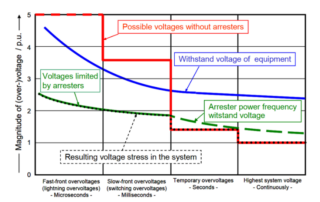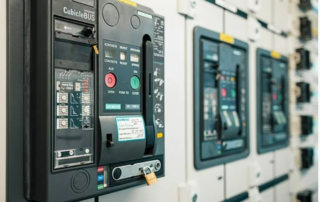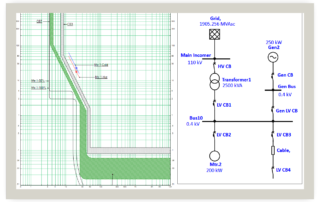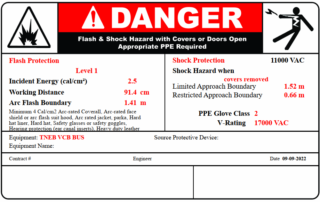Insulation Coordination
What is Insulation Coordination? As per IEC 60071-1:2019 Part 1, the insulation coordination is “Insulation coordination comprises the selection of the electric strength of equipment and its application, in relation to the voltages which can appear on the system for which the equipment is intended and taking into account the characteristics of available protective devices, so as t [...]
Insulation Coordination
What is Insulation Coordination? Types of overvoltages and their causes What is Insulation Coordination? Definition in IEC 60071-1 Selection of the dielectric strength of equipment in relation to the operating voltage and overvoltage which can appear on the system for which the equipment is intended, and taking into account the service environment and the characteristics of the av [...]
Why we should not use Typical %Z & X/R values in ETAP while modelling a transformer?
It is not advisable to use typical values of %Z & X/R while modelling the transformer in ETAP because the ETAP still follows these values based on IEC 60076-Part5-1994but this standard has been updated in 2006 & the values of %Z & X/R of transformer are not the same in IEC 60076-part5-1994 & IEC 60076-part5-2006.ETAP Still follows IEC-60076-Part5-1994 when you selec [...]
Overcurrent Protection for the Transformers
TRANSFORMER PROTECTION TRAINING Join our comprehensive training that focuses on Transformer protection covering Transformer differential, restricted earth fault, overcurrent and earth fault protection, Overfluxing protection, Voltage protection and other necessary protection. BUY NOW The failure of a transformer can be caused by any of several internal or external conditions t [...]
Commonly used Voltages in Traction Power Systems
Following are the commonly used voltages in Traction power systems: 25 kV AC 2 x 25 kV AC 15 kV AC 1500V DC 750 V DC. In general power systems, the allowable voltage variations will be +/- 6 % but in the Traction power system the voltage variation limits with respect to each voltage will be based on EN 50163. This standard also specifies the limits for each traction system voltages [...]
FUNDING LOSSES OF TRANSFORMER
OBJECTIVE: To get a highly efficient transformer operate with minimum losses. To determine the Efficiency of the Transformer on full load Condition. To increase the life cost of the static device and gain some Economical Benefit, through transmitting power to the Industrial buyers. First, manufacturers who receive estimates from purchasers are tasked with constructing an optimal tr [...]
Calculations For Capitalization of Transformer Losses
ABSTRACT I have discussed about the Losses in Transformer and how to acquire an optimal transformer with minimal loss from the manufactures and how to design it, and what’s the methodology to follow, all of them I have explained in my Previous post. But, in this post I have calculated, the capitalization value of No-load Losses and Load losses (A & B), with some Illustrative Pu [...]
LV RELEASE CO-ORDINATION
1.Introduction Generally, Protection coordination is a bottom-up approach. For any network, if protection device coordination is need to be performed, should start from the end equipment/bottom-most feeder. In the example SLD, the LV side of the Trafo2 must be coordinated first, and particularly MCC has to be enabled with the LV release settings. Then the MV side of the Trafo 2 n [...]
LOW-VOLTAGE RELEASE
LV – RELEASE The Low Voltage circuit breakers (<1000V) such as Molded-case circuit Breakers or LV power circuit breakers the sensing elements are an integral part of the circuit breaker. Fuse is both a sensing and interrupting device, but not a switching device. It is connected in series with the circuit and responds to thermal effects produced by the current flowing through it [...]
ARC FLASH STUDY
What Is an Arc Flash Study?An Arc Flash study is a risk assessment of a workplace environment that determines Arc Flash hazards. It is basically a study to calculate incident thermal energy and Arc Flash boundary & recommendations for the mitigation of Arc flash hazards by using appropriate PPE.Why Do You Need Arc Flash Studies?To protect workers from workplace hazards. Every i [...]
Finding out Different earthing system by using Zero sequence X&R
OBJECTIVE: The main objective of the blog is to find out different system grounding methods by using zero sequence X&R. INTRODUCTION: Grounding can be classified as Equipment grounding & System grounding. Equipment grounding is used for safety of human beings by minimizing the risk of electric shock. System grounding is used for connecting the Generator or Transformer neutr [...]
FCMA Starters
FCMA (Flux Compensated Magnetic Amplifier) Electrical Soft Starter are step-less voltage reducing starters. It ensure a constant low starting current with incremental voltage and torque to the motor, to achieve a continuous and smooth acceleration of the drive. FCMA soft starters are air-core based series reactors, providing a complete starting solution for motor application involv [...]












